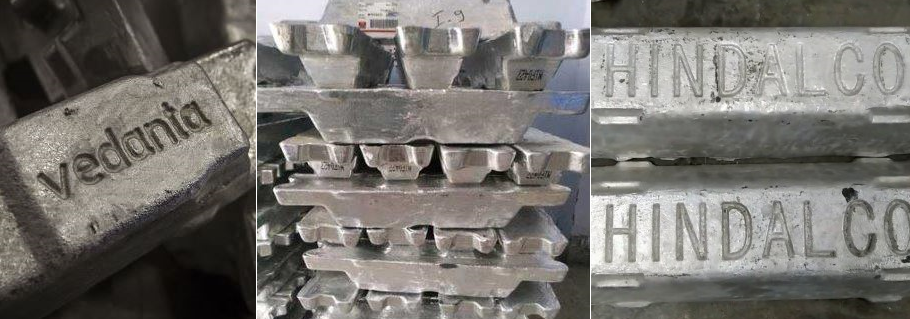

The Indian industrial sector consists of two private primary aluminium producers and the third aluminium metal producer is a state-owned company. Now, all the three aluminium companies have delivered a remarkable performance in the Q1 of 2021-22. Furthermore, the trio not only earned record EBITDA, but their production reflected surplus in the quarter on Y-o-Y, which diminished the cost of production, predominantly by reducing energy consumption.

The aluminium industry is a highly energy-intensive industry, as thermal power and crude derivatives account for between 45% -50% of the cost of production of aluminium in India, accompanied by smelter feedstock alumina at 31%.
However, the aluminium smelters in Europe and Canada are using hydropower, while the ones in West Asia operates on electricity by burning natural gas, which delivers an organic cost advantage compared to the Indian industry with the capacity to produce over 4.1 million tonnes of green metal.
The two private sector aluminium producers of India, Hindalco and Vedanta pushed their EBITDA to an all-time high, supported by escalated LME aluminium prices, efficiency enhancements and better rates of conversion of primary aluminium to value-added products (VAPs) permitting better product mix.
On the other side, the state-owned National Aluminium Company (Nalco) yielded from exports of alumina for which the global demand remained dense also made a noteworthy contribution to bigger Q1 turnover and profits.
The alumina produced by Hindalco is utilized to cater for its four smelters with the capacity of 1.3 million tonnes, whereas, the Anil Agarwal chaired Vedanta, procures both the ore and alumina in large quantities from the domestic and overseas markets to support the smelting process at Jharsuguda in Odisha and Korba in Chhattisgarh. Nalco, with a huge surplus in alumina, is annually exporting over 1.2 million tonnes.
Nalco is the world’s most economical alumina producer and its exports have boosted Nalco revenues and profits.
Abhijit Pati, CEO of BALCO, which is 51% owned by Vedanta said: “Like Nalco, the ownership of rich alumina content bauxite deposits at Baphlimali hills in Odisha and robust infrastructure, including virtually cost-free transfer of bauxite to the refinery in Rayagada district through a 19.5 km conveyor belt have made Hindalco’s Utkal Alumina a highly cost-efficient producer of smelter feedstock. Vedanta, on the other hand, tries to make good the disadvantage of being largely dependent on external sources for bauxite and alumina by pegging smelter operational efficiency at a very high level.”
The domestic aluminium industry has developed the capacity to largely feed the local demand, except for a scale of high tech alloys and critical VAPs, which are imported. This is driving the local industry to sell a lot more aluminium in the global market than locally.
The Indian primary producers seek alongside high tariff barrier on scrap imports to subject such imports to rigorous quality check, as the imports pursue to acquire a sizeable domestic market. The government has to secure that secondary aluminium producers are weakened of scrap till such time domestic generation picks up sufficiently to make imports redundant.
The local primary aluminium producers should not get diverted from the reality that India’s per capita consumption of aluminium will have to rise sharply from the present low of 2.7 kg when Prime Minister Narendra Modi has launched the idea of India becoming the world’s third-largest economy of the size of $10 trillion. However, the world average per capita consumption is 11 kg and the Chinese per capita use is 24 kg.
Niti Aayog document explained: “For India to brace the global average per capita use of 11 kg, it will require an additional annual consumption of 16 million tonnes and that will make this country the world’s second-largest aluminium user after China.”
It is not a surprise that all the three Indian aluminium producers have manifested to run after major capacity expansion programmes either in primary metal or in VAPs. Lately, Vedanta said: “The Company will make BALCO a nearly 1 million tonne smelter by building the new capacity of 414,000 tonnes over the next 18 to 24 months. Post this expansion Vedanta, including its facility at Jharsuguda, will become a 2.8 million tonne aluminium group. At the same time, Vedanta is expanding the capacity of Lanjigarh alumina refinery from 2 to 5 million tonnes to meet incremental requirements of feedstock for its two smelters.”
On the contrary, Hindalco eyeing expanding its VAPs portfolio to protect itself from fluctuations in LME metal prices.
Satish Pai, Managing Director, Hindalco, said: “Over the next few years, as part of our downstream strategy, we intend to enhance our VAPs capacity from over 300,000 tonnes to over 600,000 tonnes.”
Nalco announced the building of a Greenfield 600,000 tonnes smelter and expansion of alumina refinery capacity by 1 million tonnes, much before Sridhar Patra on-boarded as Chairman in December 2019.



Responses






